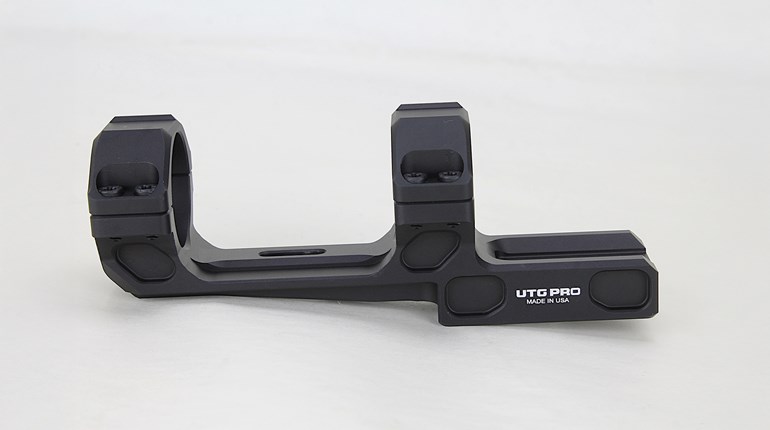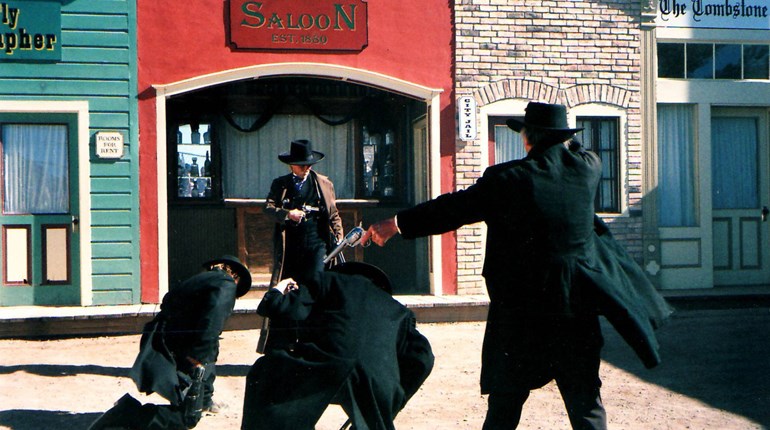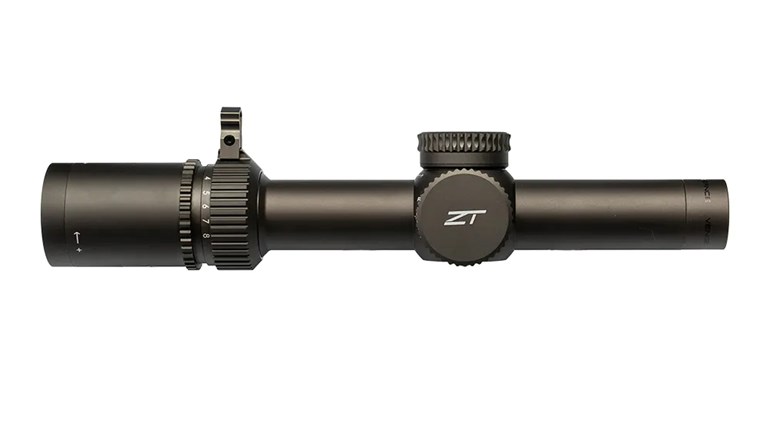
Above: Jim Crofts in a shooting position behind his Savage Model 12 F/TR with a 12-42x Nightforce scope. His rig also includes a Phoenix Precision bipod, stockwork by Ray Bowman of Precision Rifle and Tool, Edgewood Mini-Gator rear bag. Note the strong cheek weld onto the raised cheekpiece.
From the vault, in 2012 F-Class competitor and prolific SSUSA author Stanton Wormley endeavored to provide some background on what it takes to be successful in F-Class rifle competition. The result is this timeless interview with talented F-Class shooter Jim Crofts that was originally published in the August 2013 issue of Shooting Sports USA.
Retired Navy submariner Jim Crofts holds Master and High Master classifications in several High Power and F-Class disciplines. He’s been competing in F-T/R for four years and has already amassed numerous accomplishments, including winning last year’s F-T/R National Championships. He also garnered first place awards in the 2012 Remington-Bushmaster Long-Range Regional, the 2012 Virginia Long-Range Regional and the 2012 F-T/R Defenders Match at Camp Perry, along with top-three finishes in several other competitions.
In the years you’ve been involved in F-T/R, what changes have you seen?
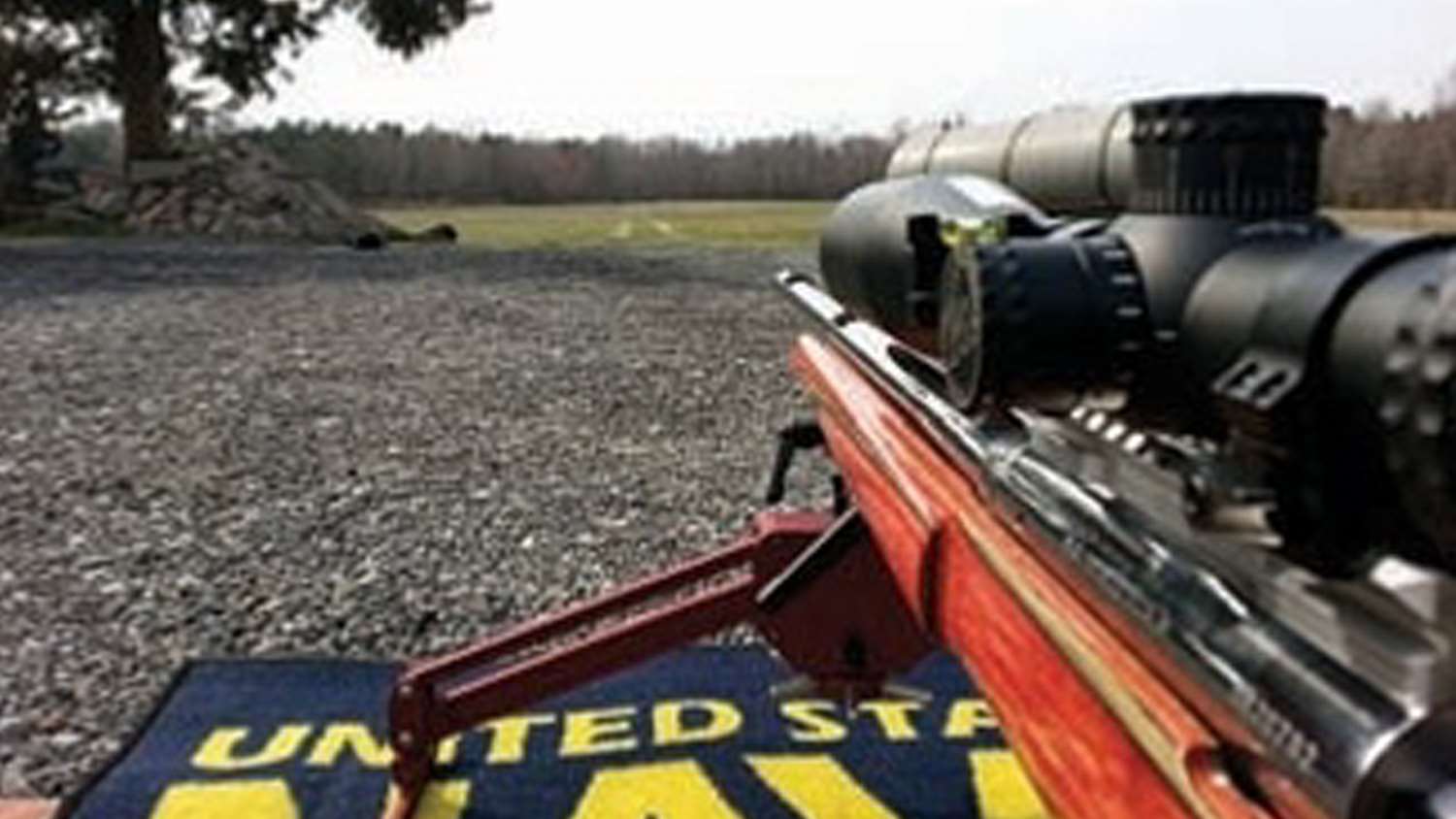
More than the equipment, though, I’ve seen the shooters get better. It takes a lot of time, effort and expertise to be successful at this sport, and there are simply more people willing to put in the work. You can see that reflected in the improving scores—from local matches to the National Championships.
What advice would you give to someone wanting to try F-Class shooting?
There are two kinds of shooters who might be new to F-Class: Those who have competed in High Power competition and those who haven’t.
People who are completely new to long-range or High Power shooting should initially keep things simple. A good varmint, tactical or even hunting rifle in .308 Win. will do for F-T/R, while F-Open shooters have a range of cartridges: From the 6.5x47 Lapua and 6.5mm Creedmoor, through the 6.5x284, up to the .284 Win. and the 7mm short magnums. You could even shoot a .30-caliber magnum if you can take the recoil. Whatever rifle is used, it should be equipped with a scope with a minimum magnification of 12-14x. A simple tactical-type collapsing bipod like the models from Harris and Caldwell would be fine to get started in F-T/R shooting, while any kind of front rest will be suitable for the first F-Open matches. A rear sandbag and a shooting mat would round out all you would need.
Although virtually all serious competitors use handloads, a new shooter should probably stick to good-quality factory ammunition. Ballistic data is usually available from the ammunition manufacturers for every load they make, so once the shooter has a 100-yard zero with the chosen load, it is relatively easy to use this data, along with a ballistic computer program, to get the proper scope elevation for each distance in a match.
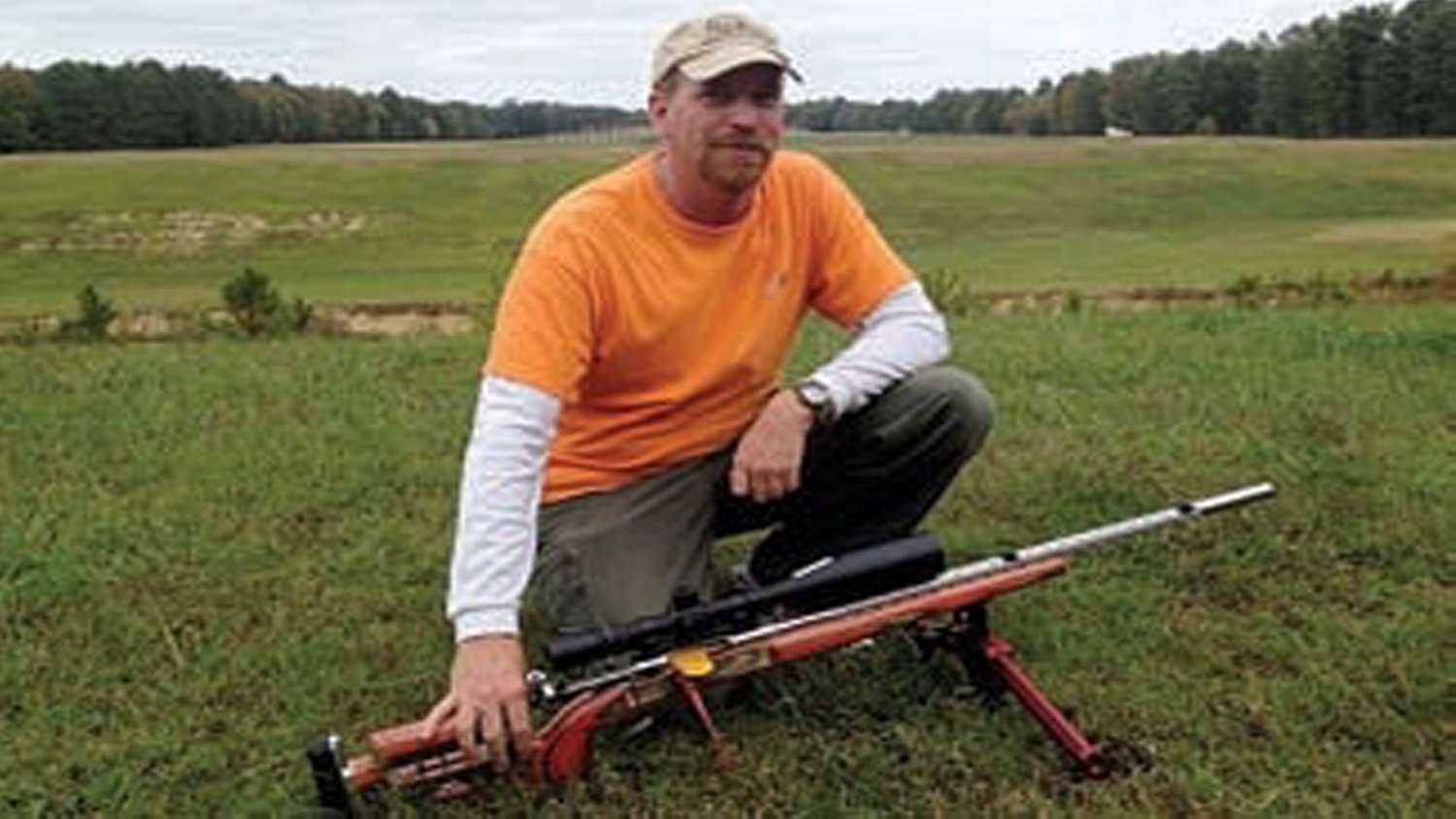
What are the general parameters for a typical F-T/R rifle?
Almost all F-Class rifles used by serious competitors today are custom guns. The only factory rifle I know of that meets the requirements for an F-T/R rifle is probably Savage’s Model 12 F/TR. Other than that, you’ve got to start with a factory or custom single-shot action, and combine that with a 28- to 32-inch, match-grade barrel in a Palma or heavy varmint contour. Personally, I’m partial to Brux barrels, but any of the tubes made by today’s top barrel makers can shoot a winning score. For 175- and 185-grain bullets, a 1:11-inch twist will suffice, but heavier bullets will need a 1:10 inch.
Trigger weight depends upon what you are used to and comfortable with. A two-ounce benchrest trigger is probably too light, and a six-pound trigger is too heavy. My AccuTrigger is set at eight ounces.
As for stocks, most competitors use either laminated wood or fiberglass composites. In addition to their popular look and feel, laminated wood may dampen gun vibrations. My own stock is the laminated wood F-T/R Low Boy made by Precision Rifle & Tool of Mebane, NC—the same folks who built my rifle. Also popular are fiberglass F-class stocks like those from Manners, McMillan and others.
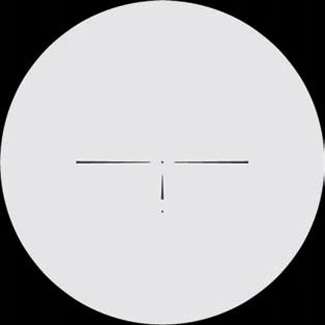
Because the F-T/R weight limit is 18.2 pounds including the bipod, the building of a winning F-T/R rifle involves both planning and compromise. Although a heavy barrel and rigid action make the gun more accurate, a barreled action that’s too heavy won’t leave enough weight left for the stock, bipod and scope. As a rough estimate, a rifle with a 4- to 5-pound stock, 30-inch heavy Palma barrel, single-shot action, lightweight bipod and a scope should be well within the weight limit.
Functionally, your F-T/R rifle has to be capable of consistent 1-MOA grouping to keep your shots in the 10-ring. I would guess that just about all of the top F-T/R rifles can print ½-MOA groups (or better) on demand, with the right ammunition.
Finally, it is hard to overestimate the importance of having a top-flight gunsmith. It’s not enough for a gunsmith to simply be able to build an accurate gun. You also want someone who is very familiar with F-Class shooting. I am lucky to have Ray Bowman, founder of Precision Rifle & Tool, build my guns. He clearly knows a lot about the sport, since, in three out of the past five years, one of Ray’s guns has won either the F-Open or F-T/R National Championship. Having someone like Ray build your gun is important not only because of his own skill and knowledge, but by having many top-level shooters among his clients, Ray also stays on the cutting edge of what it takes to win in the sport.
What about other necessary equipment?
Of course, you need a shooting mat, a way of telling how much time has elapsed in the relay, good ear protection and high quality shooting glasses. Lots of folks like to have different color lenses for different conditions. Also, a hat is important to keep the sun out of your eyes, and many competitors use a mirage shade of some sort that sits on the barrel and deflects rising heat waves away from your line of sight through the scope.
Some shooters like to use a wind meter. People have their own opinions on the best place to read the wind: The line, mid-range or the target mirage. I personally do not use a wind meter. I try to get all the information I need from the flags and the target mirage. A heavy rear bag helps the gun track better on recoil. I use Edgewood’s Mini-Gator filled with heavy bag sand. Speaking of tracking, F-T/R rules allow a shooter to place something under the bipod feet, such as a piece of carpet or even a board, so that the bipod slides uniformly under recoil. I use a strip of tightly-woven carpet. If you use a board, check the rulebook first, as there are limits on the size you can use.
The smaller scoring rings of the F-Class target make windreading more critical, and that involves reading the mirage. Like many High Power shooters, I like Kowa scopes. Mine is the Model 821. I have to say, however, that when I am shooting “in the groove,” I rarely look through the spotting scope.
Can you tell us something about F-T/R ammunition?
There are only a few factory loads that I think an F-T/R shooter should consider using: Federal Gold Medal and Black Hills target loads using the 175-grain Sierra MatchKing, and anything designed by well-known ballistician Bryan Litz. The Applied Ballistics .308 Win. ammunition looks very good, as it uses pre-sorted premium Lapua brass and 175-grain Berger bullets with weighed charges, not thrown. As I said earlier, virtually all F-T/R competitors use handloads. My loads use Lapua brass, which is very strong and consistent. However, any brand of brass can suffice if it is carefully prepped and sorted. [Read SSUSA’s advanced reloading tips.]
Please describe your shot process.
I begin my shot process immediately upon firing a shot. By the time the target goes down I’ve already readjusted my gun position and my body position, if necessary, and I’m studying the flags and the mirage. I want to see what the wind was doing at the time I broke the shot, and compare that to the result on paper when the target comes back up. Of course, I’m also looking for changing wind conditions, which will affect my next shot. By the time the target comes back up, I’m normally ready to fire again.
How do you prepare for matches?
Of course, I do a fair amount of shooting, to reinforce technique, and I also spend time developing and refining loads and tuning the gun. I try to dry-fire, and I had Ray Bowman build me a .22 LR bolt-action rifle having the same stock and trigger pull as my regular F-T/R rifle. This allows me to shoot a rifle in the backyard that has the same feel as my match gun. [Read SSUSA’s article on precision rimfire competition.]
I also do some physical training, mostly cardio and exercises such as pushups, pull ups and so forth. Cardio is very important to keep the heart rate down, making it easier to shoot between heartbeats. The most important part of my match preparation is mental. I use Lanny Bassham’s Mental Management system presented in his books and CDs. I use a lot of visualization and mental rehearsal. I practice shooting dozens of shots every day without ever picking up my gun or going to the range. I just do it mentally.
In your opinion, what’s the single most important skill needed for F-T/R success?
I would say the ability to perform a consistent shot execution, time after time. That’s most critical. Wind reading is important too, but if your shot execution is not the same for every shot, how would you know if a nine at three o’clock is the result of wind or just sloppy technique?
Consistency in shooting can be developed by anyone who is willing to put in the time and effort. So go out and start shooting. You might like it.
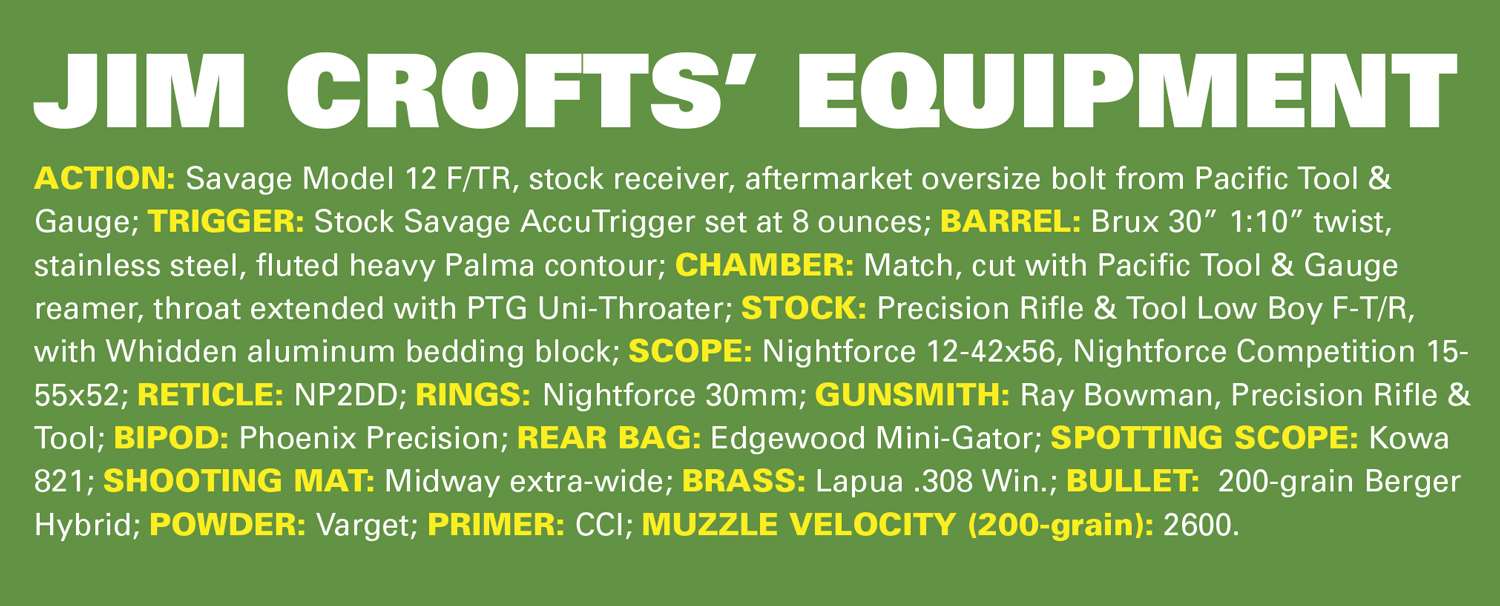
More classic SSUSA articles:













